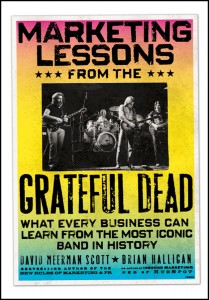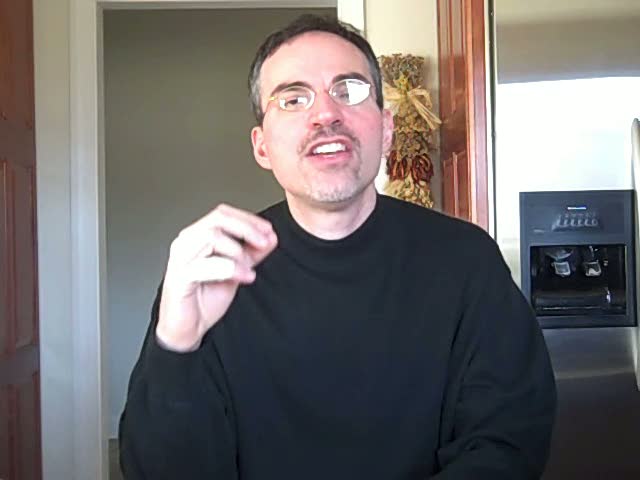To prepare for a workshop I’m giving, I’ve spent hours doing exploratory writing on how to create an elevator speech.
On the page, I’ve asked and answered questions like, “What’s an elevator speech supposed to accomplish?,” “What are the best ones I’ve heard?,” and “What are the worst ones?”
I’ve also made a list of elevator speech ingredients. Most of them, naturally, are the things you’d expect. A good speech mentions one’s target market, product or service, and benefits to the customer.
One of the ingredients I came up with, though, is more unusual. You rarely hear about it in business literature. That often overlooked ingredient is honest detail.
To better describe what I mean by honest detail, which might also be called “telling detail,” let’s turn to an outside source: novelist and essayist, George Orwell.
A Detail Saves a Life
In late 1936 to early 1937, Orwell fought in the Spanish Civil War. During one battle he was shot in the throat. Orwell not only recovered, but in the ensuing twelve years he penned his most notable books, “Animal Farm” and “Nineteen Eighty-Four.”
He also wrote an essay, “Looking Back on the Spanish Civil War,” which included the following passage:
 “At this moment a man, presumably carrying a message to an officer, jumped out of the trench and ran along the top of the parapet in full view. He was half-dressed and was holding up his trousers with both hands as he ran. I refrained from shooting at him . . . I did not shoot partly because of that detail about his trousers. I had come here to shoot at ‘Fascists’; but a man who is holding up his pants isn’t a ‘Fascist,’ he is visibly a fellow-creature, similar to yourself, and you don’t like shooting at him.”
“At this moment a man, presumably carrying a message to an officer, jumped out of the trench and ran along the top of the parapet in full view. He was half-dressed and was holding up his trousers with both hands as he ran. I refrained from shooting at him . . . I did not shoot partly because of that detail about his trousers. I had come here to shoot at ‘Fascists’; but a man who is holding up his pants isn’t a ‘Fascist,’ he is visibly a fellow-creature, similar to yourself, and you don’t like shooting at him.”
In analyzing this passage in their textbook, “Finding Common Ground,” educators Carolyn Collette and Richard Johnson write: “The life of Orwell’s enemy may have been spared because Orwell noticed a detail, the man holding his pants up with both hands – an awkward, slightly comical, and bizarre detail; lifelike in the extreme . . . “ (p. 4)
The honest detail, “lifelike in the extreme,” can persuade. The telling image – drawn, not from the mind, but from reality — can capture people’s attention and coax them into action.
Most business writing, especially elevator-speech writing, lacks such realism and candor. It stays on the surface, espousing “big ideas” through generalization and abstraction. The writer ends up saying what they think they’re supposed to say, instead of what’s real. Their words don’t make a dent in anybody’s mind.
Statistics as Detail
When I started Levy Innovation, my elevator speech used to talk about how I helped make people memorable and compelling. As I’ve written before, there was nothing wrong with saying those things. I still say them. What I hated was talking about those concepts in unsubstantiated form. Without supporting facts and detail drawn from life, they were mere opinion.
As I examined my projects for facts, I realized something that had previously escaped me. Due in part of my efforts, several clients had become popular enough to raise their fees by 600%, 800%, and even 2,000%.
Figures like those became my substantiation — my telling detail. When asked what I did, I began saying: “Consultants and entrepreneurial companies hire me to help them increase their fees by up to 2,000%.”
Painting a Candid Picture
While creating elevator speeches for other situations, I always sought that telling detail to make my point. Sometimes the detail came in the form of a statistic. Other times it came by painting a picture that let the listener know I understood what they might be going through.
For instance, if I met a consultant who explained their services awkwardly or seemed embarrassed as they spoke, I’d introduce my work in the following way:
“You know how when a businessperson meets a prospect, say, at a conference, and that businessperson starts talking about who they are and what they do, and the prospect starts looking right past them to see if there’s anyone in the room who is ‘more important’?
“So, not only has that businessperson lost any chance to gain a client, but they also feel awful about their life, because they put so much effort into their business, and this prospect looking past them is, in a way, dismissing their entire being. (At least that’s what it feels like to them.)
“Well, what my work does is to help people like that businessperson who find it tough explaining what they do and why their work matters. I counsel them on writing elevator speeches and talking points that hold attention and make prospects eager to have a conversation with them.”
More times than not, the person I was talking to wanted to find out more about how my work might help them, because the details of the picture I painted struck them as undeniably real.
(Where, you might wonder, did I get those details? From my own life. A couple of decades ago, while I was in my early twenties and manned the trade show booth for a book wholesaler, attendees would ask me, “What does your company do?” As I explained, they’d at times leave while I was in mid-sentence. You don’t forget a detail like that.)
“Help me! Help me!”
The other day I spoke with a consultant, Kathy Gonzales, whose elevator speech delighted me. It’s not because Kathy meticulously crafted every word, or delivered the speech with flair. It was the realism of her detail. Her speech sounded like it came straight from life. When I asked what she did, she said:
“I work with executives, mostly men, who want to leave the corporate world and start their own business. I don’t make them better at what they want to do. I won’t make a financial planner a better financial planner, or a baker a better baker. I just help them make the jump. They’ve got one hand on the corporate ledge, and they want to let go, but they’re crying, ‘Help me! Help me!’ That’s my client.”
Notice how Kathy didn’t make a lot of promises or claims. That adds to the persuasiveness of her speech.
I don’t know anything about Kathy’s company, Modern Happiness, and I’m not in the market for her type of service. But if I was, I’d be intrigued enough to have an initial chat – a “How do you do that?” talk — and that’s what an elevator speech is supposed to accomplish, isn’t it?
Your Challenge
If you’re struggling to come up with an elevator speech that captures attention, here’s an assignment using a standard speech format:
Think about the three most common problems your product or service solves, and create a speech for each. Don’t labor over the speeches, though. Just talk them out. Consider recording them as you go.
As I did in a speech above, begin with the phrase, “You know how when . . . ,” and describe the type of person you serve and the problem they experience in as much honest detail as you can. Stay true to what really happens. Don’t think you need to make things sound more dramatic than they are.
Once you’ve painted the scene, talk about what your work does to alleviate the problem you mentioned.
You may not get the most telling details right away — the ones, “lifelike in the extreme.” If not, don’t sweat it. As you do your project work throughout the day, pay attention to what really happens and try incorporating the most intriguing facts into future drafts of your speeches.
 As I study a business, I think, “Right now, what’s the main idea here, and what are all the pieces of philosophy, facts, and stories substantiating that idea? If this business had a table of contents, what would the chapters be called and in what order would they fall?”
As I study a business, I think, “Right now, what’s the main idea here, and what are all the pieces of philosophy, facts, and stories substantiating that idea? If this business had a table of contents, what would the chapters be called and in what order would they fall?”



